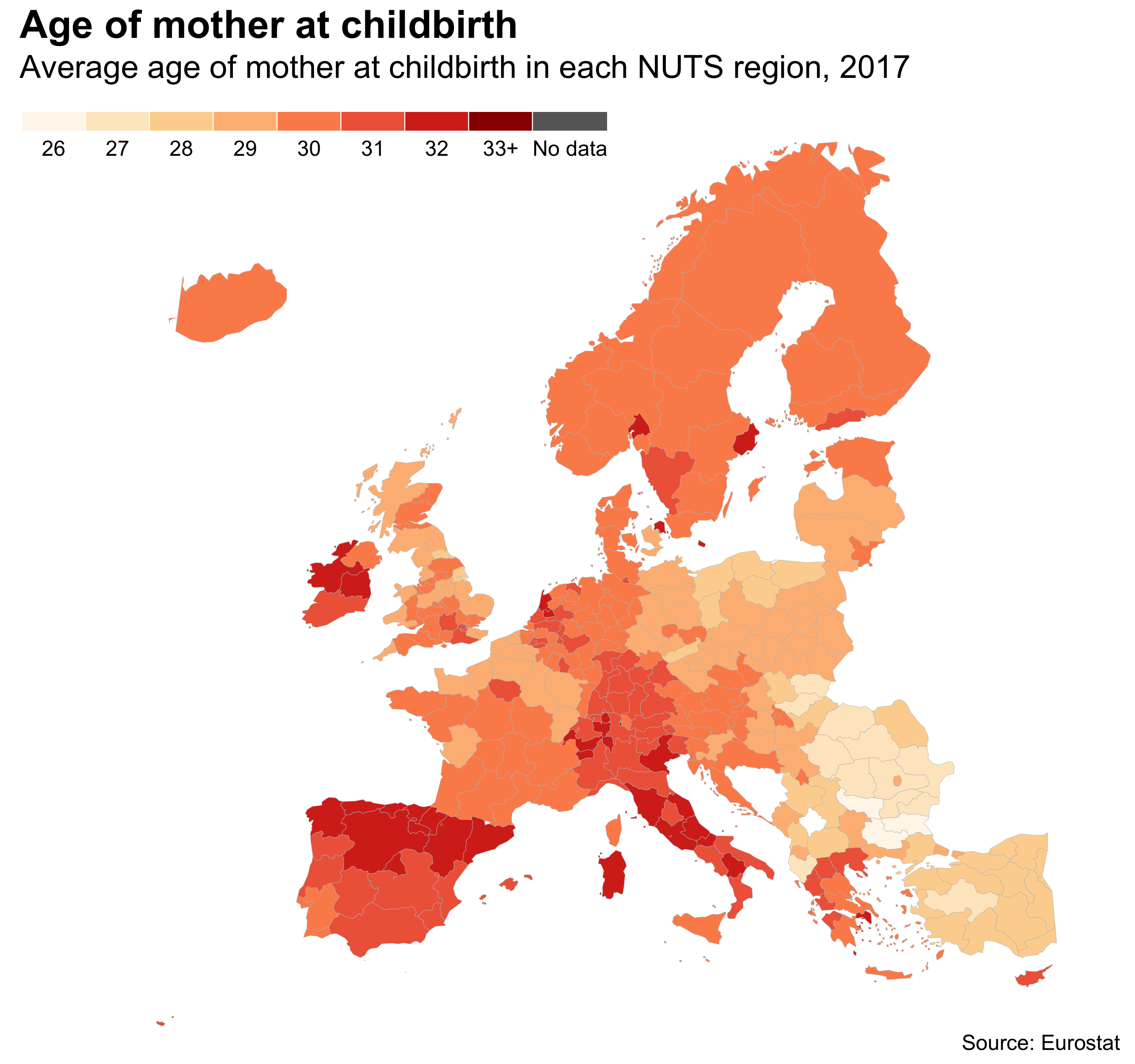To keep a country’s population stable from one generation to the next, at least two children should be born per woman. But how many European regions pass that threshold?
In this report we look closer at the fertility rates across Europe region by region. These are our findings for Tübingen.
In Europe, fertility rates have already fallen below the critical threshold of two children per woman. Not even the European countries with highest fertility rates are reaching replacement-level fertility, meaning that, without taking migration into account, countries will face shrinking populations.
Tübingen has a fertility rate that is about the same as the European average, as each woman gives birth to on average 1.63 children, based on the latest figures from 2017. Since 2012, the fertility rate has increased from 1.43 children per woman.

Compared to other regions in Germany the fertility rate in Tübingen is relatively high (tied 8 among 38 NUTS2 regions). In Chemnitz the fertility rates are highest, while they are lowest in Berlin.
| Region | Number of children per mother | |
|---|---|---|
| 1 | Chemnitz | 1.7 |
| 2 | Lüneburg | 1.7 |
| ⋮ | ||
| 8 | Tübingen | 1.6 |
| ⋮ | ||
| 36 | Gießen | 1.5 |
| 38 | Berlin | 1.5 |
Tübingen is a statistical division used by the EU, a “NUTS region”. It is made up of parts of Baden-Württemberg.
Meanwhile, regions with relatively high fertility rates for Europe can be found in France, Sweden and Turkey. However, only 13 out of 328 regions passed the replacement rate threshold of 2.1 in 2017. This is the fertility rate needed to sustain the current population level without immigration. Nine of the regions above 2.1 are in Turkey.

The average fertility rate for all EU countries is 1.59 children per woman. After decades of dropping fertility rates, European fertility rates grew in the first decade of the 2000s. This was then followed by a slight dip in 2013 and a modest rebound in the last couple of years.
Mothers getting older
The areas where fertility rates are lowest also tend to be the ones where the average age at childbirth is higher.

Areas in Northern Europe are the exception to this trend, where for instance Sweden has some of the continent’s highest fertility rates, despite the average age of mothers at childbirth being relatively high.
Women in Tübingen have children on average when they are 31.6 years old, which is older than most regions in Europe.

The overarching trend is clear: First-time mothers are getting older. Just a handful of all the regions analysed had younger mothers in 2017 compared to five years previously.

| Region | Mean age | |
|---|---|---|
| 1 | Oberbayern | 32.0 |
| 2 | Hamburg | 31.9 |
| 3 | Stuttgart | 31.6 |
| 3 | Tübingen | 31.6 |
| ⋮ | ||
| 35 | Thüringen | 29.7 |
| 38 | Sachsen-Anhalt | 29.4 |
What about the future? Countries with fertility rates below replacement level must adapt to the challenge of a population that is both ageing and shrinking.
A 2018 fertility study in the Lancet said countries would need to consider mitigating the effects with liberal immigration policies, higher retirement age or policies encouraging women to have more children. And of course, it may not be all bad. Although declining populations are a demographic challenge for societies, they could also be beneficial for the environment.